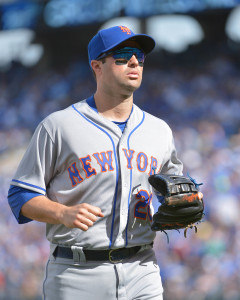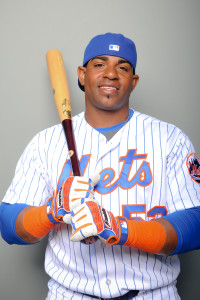Veteran manager Jim Leyland will serve as the skipper for Team USA in the 2017 World Baseball Classi, reports MLB.com’s Jon Paul Morosi. The 71-year-old Leyland most recently managed the Tigers from 2006-13, leading the Tigers to three division championships and two American League pennants. Though he didn’t capture a World Series in Detroit, Leyland did manage the 1997 Marlins club that won the Fall Classic in just the franchise’s fifth year of existence. As Leyland explains to Morosi, he never thought he would manage again once his Tigers stint concluded, but he couldn’t pass on this opportunity. “I’m never going to manage again after this,” said Leyland. “…I could not turn this down. Not from an ego standpoint, but it’s the honor of being asked to manage for your country.” Leyland is taking the honor seriously, already plotting out which players he’ll seek permission to invite to the club and envisioning possible lineups. He’s also having fun with it though, telling his former prized slugger Miguel Cabrera: “I already told Miggy I’m going to walk him.”
Some more notes from around the game…
- Following the PED suspension of Phillies Rule 5 pick Daniel Stumpf, J.J. Cooper of Baseball America examines if such discipline can, in a bizarre way, give Rule 5 players added incentive to use banned substances. Stumpf is the third Rule 5 lefty in the past year to be suspended, and Cooper points out that because the suspensions make it easier for a club to carry a Rule 5 player through the early portion of the season while still fulfilling his roster requirements, the suspensions can actually be beneficial. By the time Stumpf is activated, the Phillies will only need to carry him for about two months before rosters expand in September. And while Stumpf won’t be paid for his time on the restricted list, even the roughly $250K he stands to make (half the MLB minimum) dwarfs what he would have been paid in the minors this year. Cooper notes that many Rule 5 picks — especially relievers — are older and could be the types of players who will struggle to find work by the time they’re six-year minor league free agents. Cooper looks at the case of Andrew McKirahan, who sat half of the 2015 season with a suspension and then underwent Tommy John surgery this spring, thus landing him on the Major League 60-day DL. While McKirahan’s injury is of course unfortunate, McKirahan will make about $750K between 2014-15 — staggering sum compared to the ~$25K he might’ve otherwise made. Cooper’s column is excellent, and I’d highly encourage MLBTR readers to take the time to read it start to finish.
- The New Jersey State Interscholastic Athletic Association has deemed potential No. 1 overall draft pick Jason Groome, a left-hander out of Barnegat High School, ineligible to play due to a violation of the state’s transfer rule, as Joe Zedalis and Matthew Stanmyre of NJ.com report. Groome spent last season pitching at IMG Academy in Bradenton, Fla. and transferred to Barnegat in 2016. The NJSIAA, however, ruled that his transfer didn’t come with a “bona fide change of residence,” thus making Groome temporarily ineligible to pitch. Head coach Dan McCoy tells the NJ.com duo that Groome will be eligible to return around April 24, but Groome still could miss a pair of starts as a result, thus striking a couple of opportunities for MLB scouts and executives to see him.
- Sportsnet’s Ben Nicholson-Smith explores the rapid expansion of analytics and sabermetrics throughout the game in his latest column for Sportsnet The Magazine. As recently as five to 10 years ago, many clubs only had a lone analyst to keep up with sabermetric trends, but the amount of data-driven research has exploded, with one person indicating to Nicholson-Smith that there may be three to four times as many analytics jobs in the game as there were even two years ago. While there was a point in time where fans who kept up with sabermetric trends were ahead of many teams, those days are in the past. Teams are now building more and more proprietary metrics for player evaluation. Braves GM John Coppolella estimates to Nicholson-Smith that “maybe about 50 or 60 percent of what teams are doing privately gets reported.” Many within the game expect the gap between proprietary metrics and those that are publicly available at sites like Fangraphs and Baseball Prospectus to grow considerably in the coming years as clubs continue to make aggressive hires in statistical analysis.

